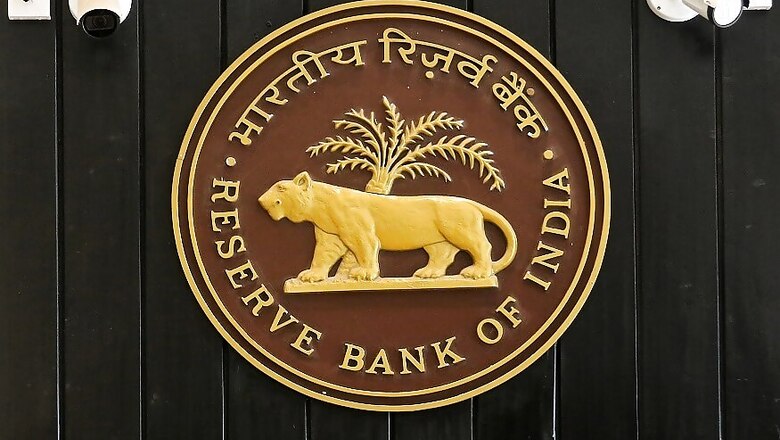
views
The Reserve Bank of India (RBI) has been making headlines this week and rightfully so. First, because of intense speculation about how much of its surplus will get transferred to the government’s coffers, since this decision was coming after a very public and long-drawn-out tug of war between the RBI officials and those sitting in the Finance Ministry.
Then, breathless commentary over whether the decision of a panel (appointed to determine how much to be transferred) to approve the largest ever such transfer was the right thing to do and how the government got even more money than it had budgeted for. After that came the annual report of the central bank, widely considered to be an authentic roundup of the fiscal and monetary events of the previous year and a credible source of policy direction for the near future.
The Bimal Jalan panel has approved transfer of nearly Rs 1.76 lakh crore from the RBI to the government. The government may use a bulk of this money to maintain a stiff fiscal deficit target, which would otherwise have been tough to adhere to, given its ambitious and hard-to-achieve tax collection targets for 2019-20. Some of this money may be used to increase public spending.
The central bank’s annual report contains several crucial observations as well as indications to what the government may do while framing policy for the remaining part of 2019-20. It not only takes note of the deepening economic slowdown and its own efforts to mitigate the effects of this slowdown through continuous monetary easing, but also suggests some structural reforms the government may want to undertake.
Here are some observations the RBI has made:
Slowdown
The RBI has termed the current economic slowdown as cyclical in nature rather than being a deep structural one. And no, this does not absolve the government from playing a key role in undertaking deep reforms. The bank has said as much. “Nonetheless, there are still structural issues in land, labour, agricultural marketing and the like, which need to be addressed. The disaggregated analysis confirms that a broad-based cyclical downturn is underway in several sectors – manufacturing; trade, hotels, transport, communication and broadcasting; construction; and agriculture.”
The Centre has, typically, gone through the entire cycle of denial (it brushed aside any talk of a slowdown for months, with the Finance Minister repeatedly speaking of an over 7% GDP growth in FY20 before grudgingly acknowledging that things were worsening.
Now, the government has announced a slew of sectoral measures to kick-start growth and further ease liquidity, and is also expected to come up with more relief for specific sectors in the near future. But whether deeper structural reforms are on the anvil is still not clear. Meanwhile, the RBI has additional advice for the government: fiscal readjustments to boost growth without accumulating public debt, which mean improvement in spending for infrastructure and the social sector.
On the revenue side, tapping the full potential of GST and digitisation, coupled with renewed effort towards improving ease of compliance may help open up room for reduction of tax rates where possible, while maintaining revenue neutrality.
$5 Trillion Dream
The Prime Minister’s rousing Independence Day speech, which exhorted Indians to work towards making this a $5 trillion economy, will need considerable work from policy makers, according to what the RBI says in the annual report.
“Reviving consumption demand and private investment has assumed the highest priority in 2019-20. This may involve strengthening the banking and non-banking sectors, a big push for spending on infrastructure and implementation of much needed structural reforms in the areas of labour laws, taxation, and other legal reforms, which will also enhance ease of doing business in pursuit of fulfilling the vision of India becoming a US$ 5 trillion economy by 2024-25.”
For the immediate revival of the economy, the bank has suggested wide ranging, structural reforms, steps which the government seems reluctant to emulate till now. “What ails the animal spirits? At the core is the issue of domestic demand. And what should be the policy focus? Continuing focus on improving ease of doing business; reform in factors of production, viz., land and labour; capitalising on opportunities opened up by the heightened trade tensions; and faster implementation of capital expenditures by public authorities, and similar other measures have the potential to inject growth impulses into the economy”.
Monetary Policy
India’s central bank has played its role in providing a stable monetary policy to fuel economic growth throughout the period since the slowdown started becoming obvious.
In the first bi-monthly monetary policy statement for 2018-19 (April 5, 2018), the MPC kept the policy repo rate unchanged at 6% and its stance as neutral. Subsequently, there was some tightening of rates as inflation reared its ugly head again but since February 2019, the MPC has been announcing successive rate cuts.
“The MPC reduced the policy rate by 85 bps (0.85%) during April-August 2019 (in addition to the 25 bps reduction in February 2019), along with a change in the stance from neutral to accommodative in June 2019.” A repo cut by RBI allows banks to lend at lower interest rates, thereby allowing EMIs for housing and buying vehicles (among others) to come down.
Ideally, an accommodative monetary policy should be supported by a similarly designed fiscal policy, where the government encourages private sector investment and boosts domestic consumption through a series of measures. This latter bit is what has been lacking till now though some initial steps have been announced earlier this month towards this end.
RBI Income More Than Doubles
The central bank’s income more than doubled to Rs 1.9 lakh crore in 2018-2019 (RBI follows July 1, 2018-June 30, 2019 calendar) due to various factors. The bank’s gold holding increased by 16.3%, according to an analysis by Kotak Research. These analysts said, “RBI’s sharp increase in income led it to transfer a record high surplus of Rs 1.76 lakh crore to the government (including Rs 28,000 crore as interim dividend). Income was driven by (1) higher interest income due to OMOs, (2) accounting change in recording forex gains and (3) writing back of excess risk provisions.”
(Author is a senior journalist. Views are personal)




















Comments
0 comment